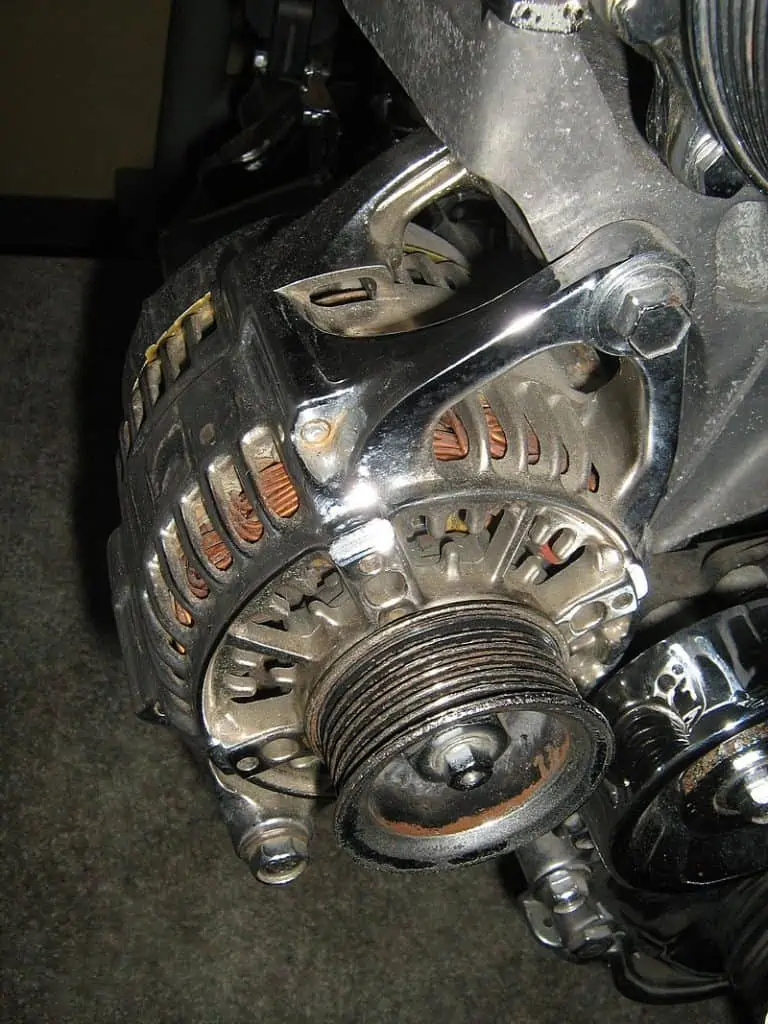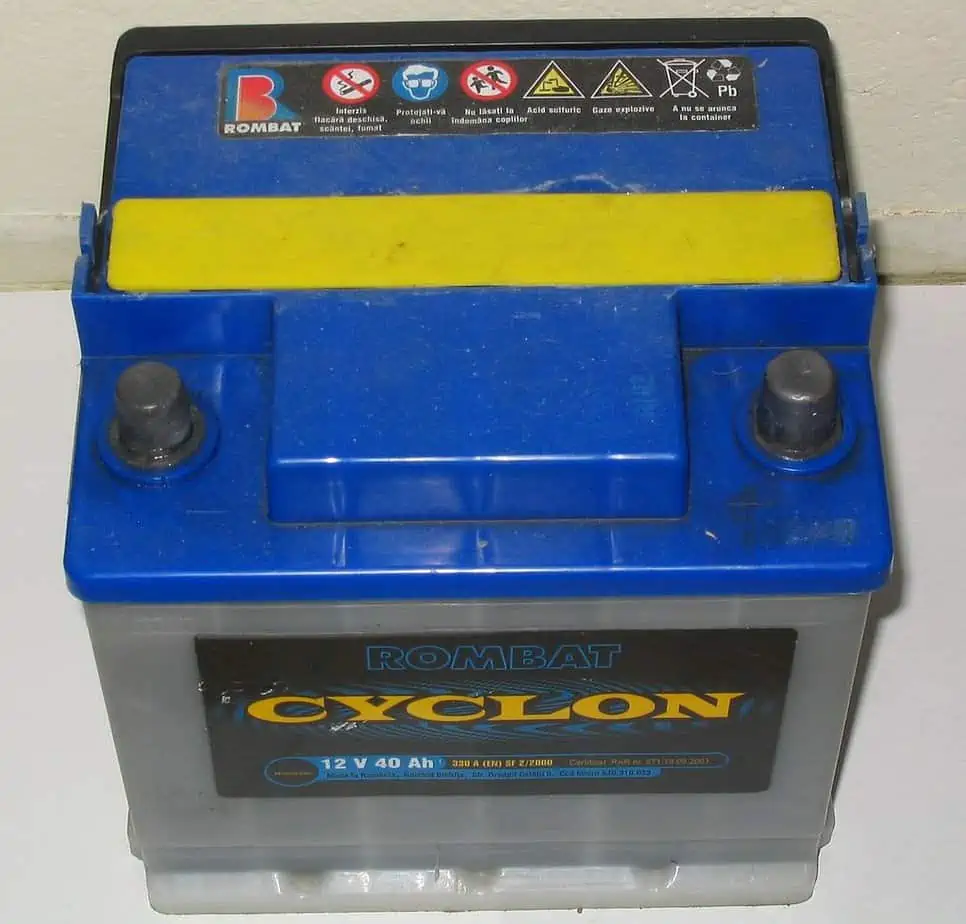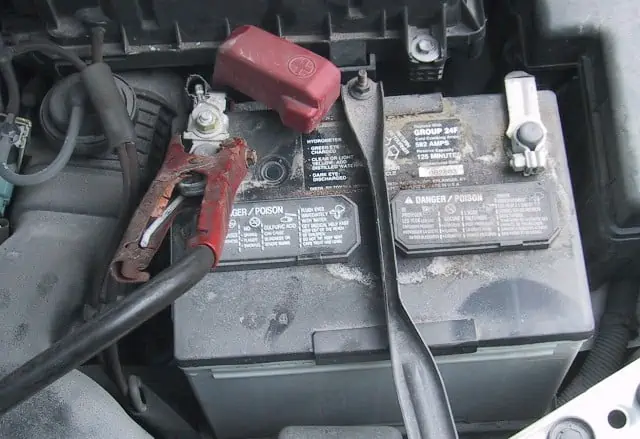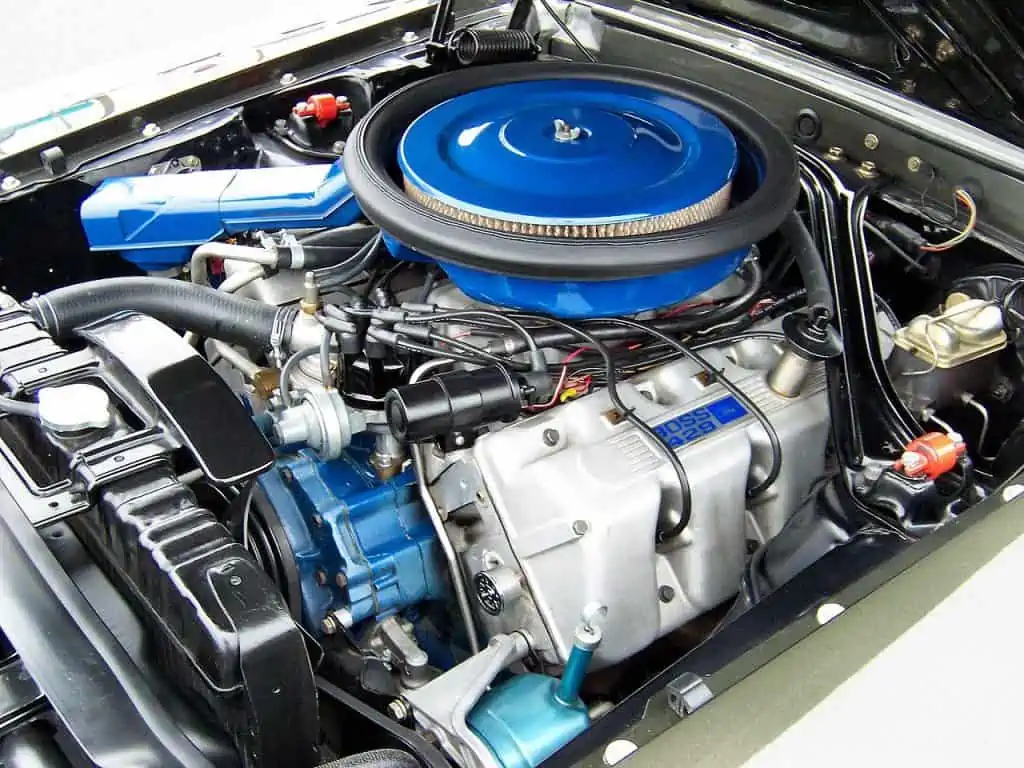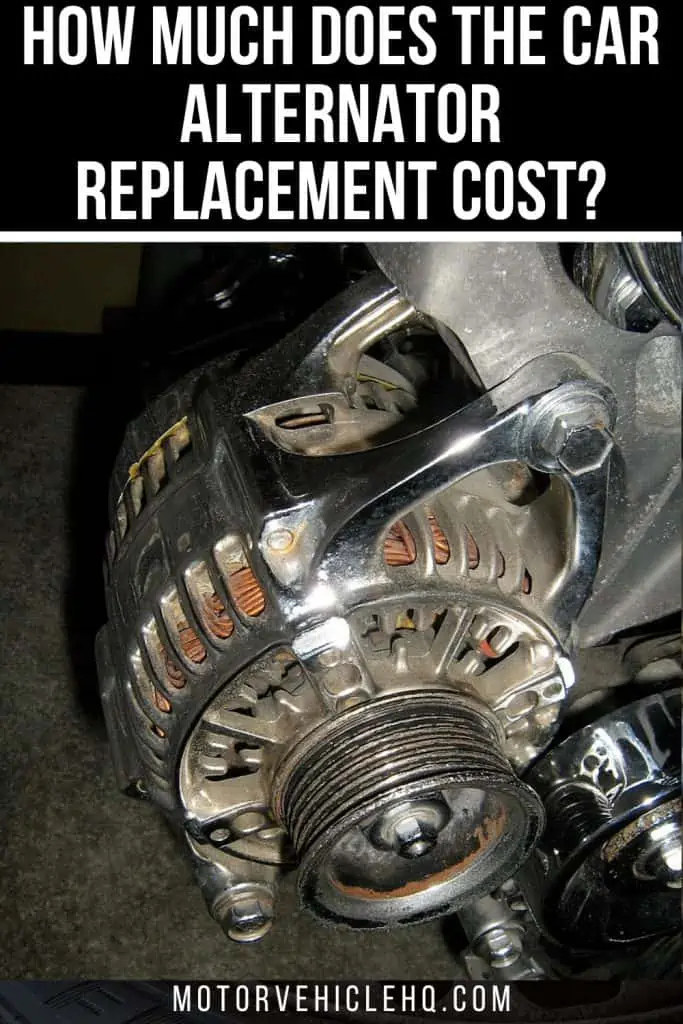One of the components of your car that works the hardest is the alternator. It’s a frequent misperception that the battery in your car powers your electronics while it’s moving. In addition to recharging your car battery while it is operating, the alternator also provides electricity to all of the electrical parts of your vehicle.
Your alternator powers everything you need, including your headlights, radio, GPS, air conditioner, heater, defroster, power seats, turn signals, dome lights, and power outlets, by converting mechanical energy into electrical energy. Your vehicle cannot operate if it dies.
Because of this, replacing it should be a top priority. Here’s a look at the price to replace one of these tiny power plants so you can be ready for alternator failure, which is more likely to occur as a vehicle ages.
How Much Does the Alternator Replacement Cost?
It might be alarming when the electrical system in your vehicle appears to be having issues. A dead battery or malfunctioning gadgets might occur, diverting your focus from the road.
While there are many probable explanations for these issues, the alternator is one potential area of failure. Your vehicle is meant to receive electricity from this little but effective producing station, so if there’s an issue, it has to be addressed.
Minor auto repairs can cost less than $50, yet extensive repairs might cost hundreds of dollars. The price to replace an alternator, which is at the lower end of the scale, can vary from $100 to $1,000 depending on many factors.
Professionally reconditioned alternators are available at the low end of the pricing spectrum, while new alternators with greater amps for contemporary vehicles are often found at the high end.
Twenty years ago, there was no need for an alternator to power the active safety systems, the heated seats, the back entertainment system, and the navigation system.
This additional power comes from more expensive, bigger amp alternators. An alternator replacement takes, on average, between one and three hours of labor, depending on whether you do it yourself or hire a professional. That time will need to be accounted for in a store’s pricing.
Your alternator converts mechanical energy into electrical energy to power all the things you require, such as your headlights, radio, GPS, air conditioner, heater, defroster, power seats, turn signals, dome lights, and power outlets. If it dies, your car cannot move.
Keep in mind that you could need to replace your batteries soon, which will increase your expenditures. It is a situation that is very different from regular functioning when an alternator malfunctions to the point where the battery is discharged. The battery may suffer internal damage as a result of extreme power depletion, rendering it incapable of holding a charge.
The OEM Vs the Aftermarket Alternator Replacement
The majority of alternators may be acquired from auto parts shops for a lot less money than an original equipment manufacturer (OEM) replacement through the dealership, but the purchaser must exercise caution in this situation. Electrical components that are of poorer quality than the original equipment on a new vehicle are sold at some inexpensive auto parts retailers.
It is not a bad idea to get an alternator from the aftermarket; however, be sure the item is of high quality. It is a wiser choice to get a new alternator from the OEM, the business that produced the old one.
Depending on the make and model, alternators can cost anywhere from $100 to $350 on average. If no other parts need to be changed, replacing an alternator will typically cost between $350-400 for most vehicles. If the serpentine belt is used in the process, your cost will increase from $20 to $50.
Expect the cost to exceed $500 in many circumstances if you want to use dealership components and labor. You should budget between $350 and $900 for an alternator replacement because the overall cost varies depending on the vehicle.
Should Alternator Replacement Go Hand In Hand with Battery Replacement?
Your serpentine belt drives your alternator. To remove the alternator, a serpentine belt—also known as a drive belt—that powers the primary pulleys on almost all modern cars must first be undone. Now is the ideal time to replace the belt if it hasn’t been done in a while or if it exhibits wear or cracking.
The only additional expense is the cost of the belt because removing the alternator will already be part of the work. The wire harness plug that connects to your alternator may occasionally be changed as well. This only occurs when high heat has melted or otherwise damaged the plastic plug.
Your battery is the final component that could need to be replaced, along with your alternator. Your battery loses a lot of energy when you start your car. It would barely survive for a few starts if the alternator weren’t continually recharging it. Your car will still require power to run if the alternator fails.
This power may be found in your battery. Unfortunately, the cells in your battery might sustain some harm if your alternator isn’t operating to recharge it. Sometimes you’re lucky, and the battery holds up to the pressure. Before any work is done, the technician often conducts a fast test to determine that.
How Much Does the Alternator Repair Cost?
In certain cases, modest repairs rather than a complete replacement can be necessary for your broken alternator. You might need to clean the electrical connection points or get a new belt. Depending on your car, you may have to spend a few hundred dollars on labor fees and a diagnostic fee in this situation.
Some cars come with alternator repair kits, which are available at a nearby auto parts shop. Generally speaking, replacing an alternator completely is preferable to trying to fix it.
Can a Used Alternator Replacement Save You Money?
One of the worst possible actions to take is this. You genuinely do get what you pay for when it comes to the electrical system components of your vehicle. Any secondhand electrical component will be a gamble and likely not come with a guarantee. It holds for refurbished alternators as well.
A car alternator by Piero / CC BY-SA 3.0. The majority of alternators may be purchased from auto parts stores for far less money than an OEM replacement through the dealership, but the buyer must use caution in this circumstance.
Remember that remanufacturing and rebuilding are two distinct processes. An alternator that has been rebuilt has had its internal components that failed replaced, while the rest of the internal components remain the same.
An alternator that has been remanufactured often has all new internal components enclosed in a used housing. No matter what failed, everything within is replaced. Choose remanufactured over brand-new if you need to save a few dollars, but avoid rebuilt and used alternators.
DIY Methods for Alternator Replacement
The typical procedures for replacing an alternator are as follows:
Step 1: Remove the Battery Connection
The battery must be unplugged as the first and most important step. There is no doubt that one of the wires on your alternator is hot, whether there are several or just one.
You’ll almost likely ground a live wire if you don’t first disconnect the batteries. The worst of these bad effects is that you get a harsh awakening, but there are several more as well.
Step 2: Take Off the Wires
Now that the battery is out of the way, disconnect the wire or wires from the rear of the alternator. Even though this is usually a simple process, if in doubt, identify them as you release them.
Step 3: Uninstall the Belt Off the Pulley
Every project has a roadblock, and the belt coming off the pulley is the one for the alternator replacement job. There is a tensioner pulley in your vehicle someplace. You’ll need to move the belt far enough to free it from the pulley. The 1995 GMC’s standard spring-loaded GM tensioner had to be pulled back using a tool.
On many autos, tension is applied by rotating a bolt via threads in screw-type or rod-end tensioners to lengthen or shorten a rod. When enough tension has been released, simply spin the bolt/rod end with a wrench or socket to enable belt removal.
We exerted a lot of force when using a Craftsman 17mm Cross Force wrench. That would normally be a terrible experience, but the Cross Force was built specifically for situations like that.
You press on a level surface because of the middle 90-degree twist of the Cross Force wrenches. We were able to exert ourselves more without feeling uncomfortable as a result. So, as soon as we started working, the belt came undone.
Step 4: Take Off the Bolts
Once the belt has been taken off, all that’s left to do is take off the bolts holding the alternator to the bracket. Depending on the model, three bolts have to be taken out—one in the front and two in the back.
Step 5: When Halfway Through the Process
Having the old alternator in your hand puts you halfway there. You’ll probably discover that installing the new one goes much more quickly because you already know what size the bolt heads are and where everything is.
Step 6: Assess the Replacement Alternator
Check the new unit to make sure it will work for your application before reassembly. The replacement can be messier to deal with because it is from a junkyard, but it has the bonus of actually operating, which is a great improvement over the previous broken unit.
The alternator collects power from the battery and amplifies it with an electromagnet while the engine is running to supply all of your car’s electrical needs.
Step 7: Reverse the Removal Procedures Complete the Installation
Finish the process by going through the phases of removal in reverse, paying close attention to belt routing and tensioning. Even if you purchased a set of Cross Force wrenches just for the project, you would still save hundreds of dollars above what a shop would charge and get some brand-new tools in the process. There are a lot worse eventualities that we can envision.
Which Factors Influence the Alternator Replacement Cost?
Though they may all basically have the same appearance, new alternators might range in price. They consist of:
- The size, manufacturer, model, and year of the engine: When shopping for parts like the alternator, always keep its specifications in mind. Only a perfect fit for your car’s requirements will do.
- Amount of amps: Smaller alternators with lower electrical output requirements often contain fewer high-value components, such as copper utilized in the windings. Consequently, production expenses are cheaper. But this isn’t always the case.
- Its mounting technique: You can’t select a cheap alternator made for a different vehicle since it needs to fit exactly. It will fail.
- Electrical connections design: Older vehicles’ 1-wire alternators are frequently less expensive, however, 3-wire alternators are typically more expensive.
- The warranty on the new part: It is to be expected that choosing a new item with a one-year guarantee over a similar part with a lifetime warranty would initially cost you more money.
What Is the Purpose of an Alternator In a Car?
The amount of electricity used by cars nowadays is startling. There are modules and sensors everywhere, in addition to the obvious systems like the radio, power windows, door locks, sunroof, and heated seats that require power.
The anti-lock brakes, for instance, often comprise a wheel speed sensor at each wheel, an anti-lock brake control module, an ABS pump, and other associated equipment that all require continuous access to power.
While the engine is operating, the alternator draws energy from the battery and amplifies it using an electromagnet to meet all of your car’s electrical demands.
Additionally, it produces enough power to replenish the battery by sending some back to it. A collection of diodes in the rectifier convert the alternating current (AC) produced by the alternator’s magnetic rotor and copper windings into the direct current (DC) required by your car’s gadgets.
To avoid problems from both too little power and overcharging, the voltage output is controlled.
The alternator is deteriorating and has to be changed if it isn’t producing between 13.5 and 14.5 volts, is making sounds, or is letting the improper kind of electricity flow through.
The Alternator: How Does It Work?
It’s useful to first grasp the alternator’s construction to comprehend how it functions.
This coconut-sized component, which often rests close to the engine’s top, is made up of an outer casing that protects a stator and rotor. Aluminum was used for the housing because it cannot be magnetized and effectively distributes heat.
Extreme power depletion may cause internal damage to the battery, which would prevent it from retaining a charge.
Around 10 to 20 magnetic poles protrude from the rotor’s central primary mover like flowers do from a stem. North and South magnetic poles alternate here.
The crankshaft of a running engine moves the rotor by the use of a belt (often a serpentine belt in modern cars), which connects to the prime mover and rotates the whole rotor (following the previous example, the flower spins). This motion of the poles produces magnetic flux.
The brushes that create the magnetic field in each pole are situated close to the poles, and slip rings around the prime mover deliver direct current to them. A portable generator or tiny generators connected to self-excited alternators provide this electricity.
A network of copper coils makes up the stator assembly. The most common three-phase assembly used in cars comprises three sets of copper coils that are 120 degrees out of phase with one another. As a result, three sets produce the same amount of electricity. The magnetic flux produced by the rotating rotor induces an alternating current in the copper wire.
A diode, sometimes referred to as a rectifier, at the opposite end of the alternator turns the AC power into DC power, which may be utilized by the vehicle and stored in the battery.
To prevent the battery from receiving too little or too much power, older cars feature a voltage regulator between the alternator and the battery. The battery or other electrical components may be harmed by this. The ECU handles this in more modern vehicles.
Since cooling is essential to an alternator’s effective operation, there are cooling fans that are also powered by the serpentine belt, as well as vents on the front and rear to disperse heat.
Several connectors on the unit’s rear link the alternator to the electrical system, enabling the ECU to receive sensor data and switch the alternator on and off.
Which are the Common Bad Alternator Symptoms?
A defective belt prevents the rotor from spinning properly, which prevents the alternator from producing electricity. Bad bearings, which enable the rotor to rotate freely, can also cause the rotor to seize.
Naturally, depending on the underlying reason, different symptoms will be displayed by the vehicle. Get your alternator checked out right away if you experience any of the following symptoms of a faulty alternator.
Often, repair expenses cannot be avoided. The question of whether you can save money on additional repairs arises after the signs of a faulty alternator are apparent. It could be time to replace the alternator if you experience one or more of these symptoms.
1. A Malfunctioning Battery
The battery supplies the energy needed to start the car, not the alternator. However, while the car is operating, the battery gets charged. The vehicle won’t start if the battery can’t be charged. When you turn the engine on, the battery provides a powerful electrical current to the starter.
A dead battery may be an indication that the alternator isn’t recharging the starter’s power consumption. This is a difficult scenario since the alternator, the battery, or any number of other problems might be the cause (bad starter, spark plugs, etc).
2. The Battery Warning Light Illuminates
Additionally, owing to a lack of electricity, you can see warning lights on the dashboard, including the battery light, “check engine” and “ALT” lights, as well as other phantom lights.
However, it indicates a charging issue. It may be undercharging or undercharging, two circumstances that, among other things, might be brought on by an alternator that isn’t working properly. As a result of the brain’s inability to think clearly when the ECU is power-starved, erroneous signals may be transmitted (much like how you may feel when you’re starving to death).
A dead battery might be a sign that the alternator isn’t replenishing the starter’s power requirements. Given that the alternator, battery, or a variety of other issues might be at blame, this is a challenging circumstance.
3. The Feeling of Burning Odor
A burning odor can occasionally be brought on by the rubbing of components or electrical problems in a faulty alternator. Stop driving and have the situation looked at since you probably don’t want a fire beneath the hood. A burning electrical smell may indicate an alternator issue, whereas a strong burning rubber odor may indicate a belt sliding down the alternator pulley if it is starting to seize.
4. Issues with the Lighting System
Your interior and exterior lights can seem dimmer than usual or unusually bright. Additionally, there can be flickering. The alternator’s variable voltage may be the cause of this.
5. Uncommon Electrical Problems
The alternator also generates the electricity needed to run the car’s amenities, including the air conditioner, power windows, power mirrors, audio, heated seats, heated mirrors, headlights, and entertainment. Even while strange events in your vehicle might not initially seem connected to the alternator, it’s always a chance.
Poor voltage can result in a variety of electrical issues, including sluggish power window motors, crackling or fading radio signals, low fan speed, and many more. The alternator may be the problem if you discover that any or all of these are not functioning properly or at all, particularly while the car is idle (because the RPM isn’t high enough to provide adequate power if there are other problems).
On your dashboard, faulty electrical gauges could also be visible. It’s critical to stop driving right away and have the problem rectified since such indicators provide you with vital information about your vehicle’s condition and safe driving conditions (such as speed and oil temperature).
6. Presence of Cores for Rebuild
Alternators can be either new or refurbished, with remanufactured alternators making up the bulk of the aftermarket. Rarer cars and choices lead to rarer alternators, which leads to a decrease in the number of cores returning for rebuilding and a price increase.
7. The Car Hood Is Whirring
The alternator includes rotating components, and if their motion is hindered (for example, by worn bearings), strange sounds will result. Even if everything else appears to be operating as it should, an alternator that is making a whining or whirring noise beneath the hood might soon fail.
A seize-up may be imminent if the alternator bearings are worn or damaged. Generate a note of the noises you hear and what’s occurring with the vehicle when you hear them inform your mechanic since a seizing rotor will make a loud grinding noise. This data can provide useful hints.
8. The Car Engine Stalls
Modern vehicles may even completely shut off the engine while it is running since electronic fuel injectors require power to function correctly. Problems with this might prevent the combustion cycle from effectively continuing since the appropriate amount of fuel must be fired into the combustion chamber at the right moment for the engine to function smoothly.
Is It Safe to Keep Driving a Car With a Bad Alternator?
When the alternator isn’t charging sufficiently, a brief drive is usually good. Electricity can be replaced as necessary, such as when you’re driving a few blocks to the repair shop. However, even on a short trip, an overcharging alternator can harm batteries, computer modules, and other electronics or wiring.
The car engine bay by Morven / CC BY-SA 3.0. Modern cars may even totally switch off the engine while it is running if the alternator goes bad mainly because the electronic fuel injectors need power from the alternator to operate properly.
Fixing an alternator issue should be your priority as soon as you see one. To be on the safe side, arrange for a tow truck to transport it to your location if you’re not sure whether it’s safe to drive.
How Often Should Alternator Replacement Be Done?
Because a variety of factors impact an alternator’s life, it can be challenging to forecast how long it will survive. These variables include how the vehicle is operated, the environment in which it is operated, and the electrical equipment it often uses. You should prepare to replace your alternator if you intend to maintain your vehicle for more than a few years.
It’s challenging to predict how long an alternator will survive in comparison to your brake pads, tires, or even the serpentine belt. Some vehicles will have it for the duration of their lives, while others will need to have it replaced more than once.
An alternator should typically last between seven and ten years. It might be anything from 100,000 to 150,000 kilometers.
Does the Insurance Cover the Alternator Replacement Cost?
Ordinary wear and tear frequently cause alternators to fail. As a result, the price of a new one is often not covered by insurance coverage. The sole exception would be if a vehicle accident had destroyed the alternator.
You can still get a lot of assistance from your insurance coverage. You can be towed to the closest store if you have a policy that includes roadside help. If a faulty alternator leaves you stuck on the side of the road, this will come in useful. Since you can never predict when a broken alternator may occur, having a dependable insurance plan is essential!
How Can You Test the Load of an Alternator?
Testing your alternator with a voltmeter, which is a feature of a multimeter, might help you learn more about its condition.
A healthy, fully charged battery should register 12.6 to 13.2 volts while the car’s engine is off. The voltage should remain between 12 and 14 volts even while the car is running at about 1k RPM. The voltage should not fall below 12 volts or rise over 14 volts before you begin turning on the accessories in the power and revving the engine.
Your alternator can be damaged if any of your figures are out of the ordinary. A battery can be fried if the voltage isn’t adjusted or if it’s too high. The alternator cannot adequately charge the battery if the voltage is too low, which is bad for the battery.
The Conclusion
A crucial part of your vehicle that serves many functions is the alternator. You can prepare for when your vehicle’s alternator has to be changed by being aware of the warning signs of a failing alternator and the price of a new one.
These numbers represent averages rather than actual rates offered at any individual auto repair shop; repair costs can also vary by geographic location, the vehicle makes, and model.
The price to replace your alternator may vary depending on the vehicle you drive and the shop you visit, however selecting aftermarket or remanufactured parts may result in cost savings. You are now ready to depart after having your alternator changed.
An extended vehicle warranty, however, can be a wise choice if you want to prevent having to pay to repair your alternator again in the future.
Extended warranties, commonly known as vehicle service contracts, help to cover the expense of unanticipated repairs resulting from faulty or damaged components. The next time your alternator breaks down, as long as your insurance plan covers it, you’ll just be responsible for your deductible. The remainder will be covered by your warranty provider.


Jim Wicks is the founder of MotorVehicleHQ. With over two decades of experience in the automotive industry and a degree in Automotive Technology, Jim is a certified car expert who has worked in various roles ranging from a mechanic, car dealership manager, to a racing car driver. He has owned more than 20 cars over the past 15 years. Ask him about any vehicle you see on the road and he can tell you the make, model and year. He loves the aesthetics of all things cars, and keeps his vehicles in pristine condition.
In his free time, Jim enjoys getting his hands dirty under the hood of a classic car or taking long drives along the country roads. His favorite car? A 1967 Shelby GT500, a true classic that, according to Jim, “represents the pure essence of American muscle.”


